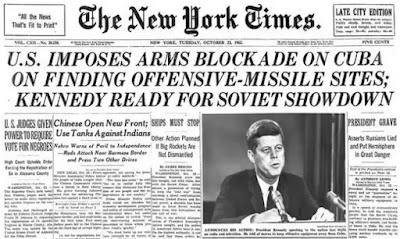Aerial view of missile launch site at San Cristobal, Cuba. (John F. Kennedy Library)
That intelligence photo is not from 30,000 feet either. The pilot could have been shot down if the Cubans and Russia were preparing for war. They weren't. They simply were preparing to kill all people in the USA. Is there a reason to believe that is still not the aspirations of Putin's Russia?
After the failed U.S. attempt to overthrow the Castro regime in Cuba with the Bay of Pigs invasion, and while the Kennedy administration planned Operation Mongoose, in July 1962 Soviet premier Nikita Khrushchev reached a secret agreement with Cuban premier Fidel Castro to place Soviet nuclear missiles in Cuba to deter any future invasion attempt. Construction of several missile sites began in the late summer, but U.S. intelligence discovered evidence of a general Soviet arms build-up on Cuba, including Soviet IL–28 bombers, during routine surveillance flights, and on September 4, 1962, President Kennedy issued a public warning against the introduction of offensive weapons into Cuba. Despite the warning, on October 14 a U.S. U–2 aircraft took several pictures clearly showing sites for medium-range and intermediate-range ballistic nuclear missiles (MRBMs and IRBMs) under construction in Cuba. These images were processed and presented to the White House the next day, thus precipitating the onset of the Cuban Missile Crisis.
Kennedy summoned his closest advisers to consider options and direct a course of action for the United States that would resolve the crisis. Some advisers—including all the Joint Chiefs of Staff—argued for an air strike to destroy the missiles, followed by a U.S. invasion of Cuba; others favored stern warnings to Cuba and the Soviet Union....


